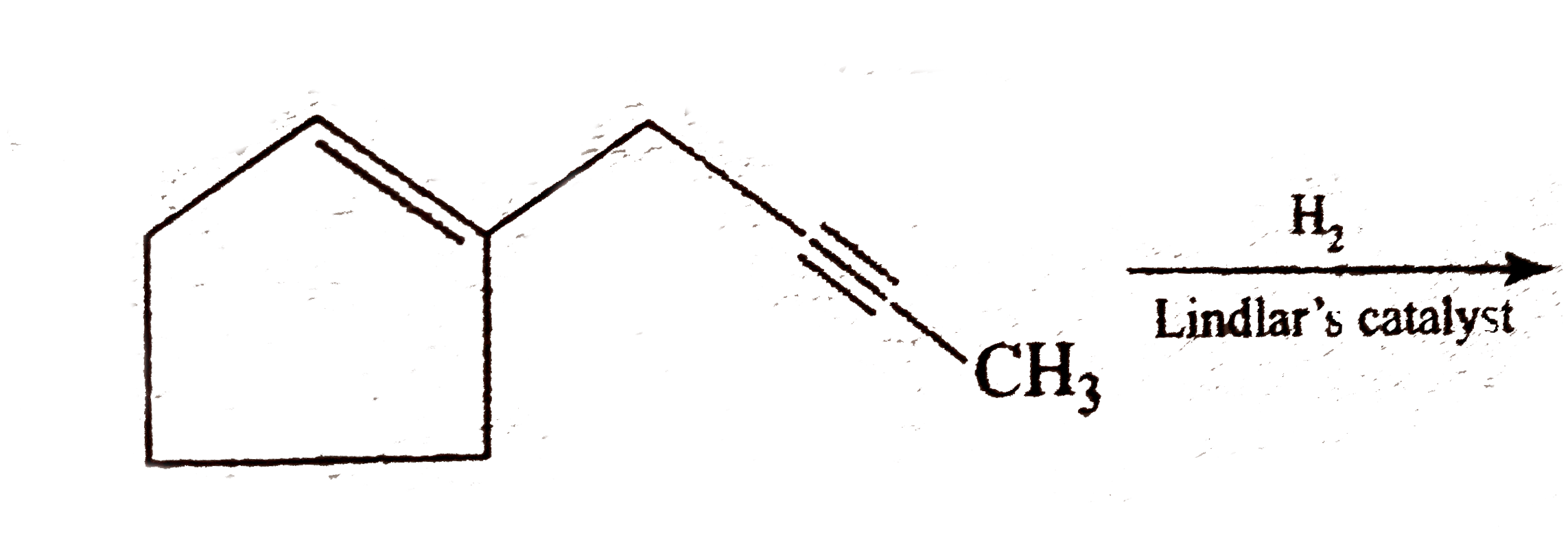PhCOEt+Mg →Ether
The number of stereoisomers shown by the product of the following reaction would be:
To determine the number of stereoisomers produced from the reaction of phenylacetone (PhCOEt) with magnesium in the presence of ether, we can follow these steps:
Step 1: Identify the Reactants
The reactants in this reaction are phenylacetone (PhCOEt) and magnesium (Mg). The structure of phenylacetone consists of a phenyl group (Ph) attached to a carbonyl (C=O) and an ethyl group (Et).
Step 2: Understand the Reaction Mechanism
When phenylacetone reacts with magnesium, the magnesium atom acts as a nucleophile and attacks the carbonyl carbon of the ketone. This forms a magnesium alkoxide intermediate.
Step 3: Analyze the Formation of Stereocenters
The carbonyl carbon (C=O) is initially sp2 hybridized, but upon the attack by magnesium, it becomes sp3 hybridized, creating a new stereocenter. The carbon atom that was part of the carbonyl group now has four substituents: the phenyl group, the ethyl group, the magnesium atom (or the alkoxide formed), and a hydrogen atom.
Step 4: Determine the Number of Stereoisomers
Since there is one stereocenter formed in the reaction, the number of possible stereoisomers can be calculated using the formula 2^n, where n is the number of stereocenters. In this case, n = 1.
Number of stereoisomers=21=2
Conclusion
Thus, the number of stereoisomers shown by the product of the reaction of phenylacetone with magnesium in the presence of ether is 2.
---
The reactants in this reaction are phenylacetone (PhCOEt) and magnesium (Mg). The structure of phenylacetone consists of a phenyl group (Ph) attached to a carbonyl (C=O) and an ethyl group (Et).
When phenylacetone reacts with magnesium, the magnesium atom acts as a nucleophile and attacks the carbonyl carbon of the ketone. This forms a magnesium alkoxide intermediate.
The carbonyl carbon (C=O) is initially sp2 hybridized, but upon the attack by magnesium, it becomes sp3 hybridized, creating a new stereocenter. The carbon atom that was part of the carbonyl group now has four substituents: the phenyl group, the ethyl group, the magnesium atom (or the alkoxide formed), and a hydrogen atom.
Since there is one stereocenter formed in the reaction, the number of possible stereoisomers can be calculated using the formula 2^n, where n is the number of stereocenters. In this case, n = 1.
Thus, the number of stereoisomers shown by the product of the reaction of phenylacetone with magnesium in the presence of ether is 2.
Topper's Solved these Questions
- ALDEHYDES, KETONES AND CARBOXYLIC ACIDS BOOK - AAKASH INSTITUTE ENGLISHCHAPTER - ALDEHYDES, KETONES AND CARBOXYLIC ACIDS EXERCISE - Try Yourself
20 Videos
- ALDEHYDES, KETONES AND CARBOXYLIC ACIDS BOOK - AAKASH INSTITUTE ENGLISHCHAPTER - ALDEHYDES, KETONES AND CARBOXYLIC ACIDS EXERCISE - Assignment (SECTION -I Subjective Type Questions)
10 Videos
- ALCOHOLS, PHENOLS AND ETHERS BOOK - AAKASH INSTITUTE ENGLISHCHAPTER - ALCOHOLS, PHENOLS AND ETHERS EXERCISE - Try Yourself
5 Videos
- AMINES BOOK - AAKASH INSTITUTE ENGLISHCHAPTER - AMINES EXERCISE - Assignment Section -J (Aakash Challengers Questions)
9 Videos
Similar Questions
Knowledge Check
The possible number of stereoisomers of the product of following reaction would be:
Ph−CH=CH−CH∣CH3−C∣H=OH2N−OH−−−−−−−−→pH=4.5+A2B6C8D4
Total number of stereoisomers of product (B) will be:A2B3C4D5
The possible number of stereoisomers of the product of following reaction would be :
Ph−CH=CH−C∣CH3H−CHONH2OH−−−−→
View SolutionFinal product of the following sequence of reactions would be

View SolutionWhat would be the products of the given reaction ?

View SolutionThe product (Y) of the following sequences of reactions would be:

View SolutionWhat would be the major product in the following reaction ?

View SolutionWhat would be the major product in the following reaction ?

View Solution


